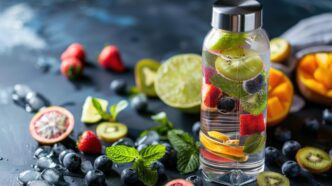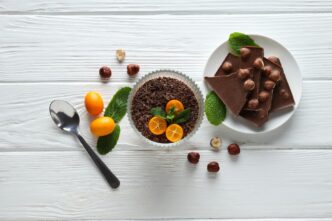A Quick Takeaway
The Story Behind the Trend
How to Make It Work for You
The Community View
Exercising in hot weather presents a unique challenge, as the body struggles to regulate its core temperature, potentially leading to discomfort, reduced performance, and even serious heat-related illnesses. For anyone looking to maintain their fitness routine when temperatures soar, whether an outdoor runner, a gym-goer in a warm facility, or an athlete training in the summer sun, specialized cooling gear is an indispensable tool. This equipment, ranging from advanced moisture-wicking apparel to innovative personal cooling accessories, is designed to actively manage heat, facilitate sweat evaporation, protect against UV radiation, and ultimately help individuals maximize their hot-weather workouts safely and effectively.
The Science Behind Heat Stress and Performance
When you exercise, your muscles generate heat, raising your core body temperature. In normal conditions, your body cools itself primarily through sweating and the evaporation of that sweat from your skin. However, in hot and humid environments, this natural cooling mechanism becomes less efficient, as the air is already saturated with moisture, hindering evaporation.
This inefficiency can lead to heat stress, where your cardiovascular system works harder to pump blood to both your working muscles and your skin for cooling. Symptoms like fatigue, dizziness, muscle cramps, and a significant drop in exercise performance can occur. Prolonged or severe heat stress can escalate into heat exhaustion or, in extreme cases, life-threatening heatstroke, making strategic cooling crucial for both safety and effectiveness.
Essential Cooling Apparel
The right clothing forms the foundation of any hot-weather workout strategy, moving beyond simple lightweight fabrics to actively enhance your body’s natural cooling processes.
Moisture-Wicking Fabrics
These specialized materials are engineered to draw sweat away from your skin and distribute it across the fabric’s surface, where it can evaporate more quickly. Unlike cotton, which absorbs sweat and stays wet, fabrics like polyester, nylon blends, and bamboo viscose keep you feeling drier and cooler.
When selecting shirts, shorts, and even socks, prioritize items explicitly labeled as “moisture-wicking” or “quick-dry.” This technology is critical for maintaining a comfortable microclimate around your body, allowing for efficient evaporative cooling.
Ventilated Designs
Beyond fabric type, the construction of your apparel plays a significant role in airflow. Look for garments featuring mesh panels, strategic cutouts, or laser-perforated zones, often found in areas prone to high sweat accumulation like the back, underarms, or inner thighs. These design elements promote superior ventilation, allowing air to circulate freely and further aiding in sweat evaporation.
While some prefer loose-fitting clothing for maximum airflow, compression gear made from cooling, moisture-wicking materials can also be effective by providing a continuous evaporative surface close to the skin. The choice often depends on personal preference and the specific demands of your activity.
UV Protection
Sun exposure not only increases your risk of skin damage but also adds to your body’s heat load, making you feel hotter faster. Many modern athletic garments incorporate ultraviolet protection factor (UPF) ratings, indicating how much UV radiation the fabric blocks. A UPF of 30 or higher is recommended for significant sun protection.
Don’t shy away from long-sleeved shirts with high UPF ratings in hot, sunny conditions. They can often keep you cooler than short sleeves by shielding your skin from direct sun, reducing the need for constant sunscreen reapplication, and leveraging their cooling fabric properties.
Hydration and Cooling Accessories
Beyond what you wear, several innovative accessories can provide targeted cooling and support your hydration efforts.
Insulated Water Bottles and Hydration Packs
Staying adequately hydrated is paramount in the heat. An insulated water bottle can keep your water refreshingly cold for hours, making it more appealing to drink. For longer workouts, a hydration pack or vest allows you to carry a larger volume of water, often with extra pockets for essentials, ensuring continuous access without breaking your stride.
Consider adding electrolyte tablets or mixes to your water to replenish essential minerals lost through sweat, further supporting your body’s hydration balance and preventing cramps.
Cooling Towels and Bandanas
These simple yet effective tools utilize hyper-evaporative materials that cool significantly when wet. To use, simply soak the towel or bandana in water, wring out the excess, and snap it to activate the cooling effect. Placing it around your neck, wrists, or over your head provides instant relief by drawing heat away from major blood vessels.
The evaporative process mimics your body’s natural cooling, but at an accelerated rate, making them ideal for mid-workout breaks or quick cool-downs.
Headwear for Sun Protection and Sweat Management
A breathable cap or visor made from moisture-wicking material can protect your face from the sun while also absorbing sweat that might otherwise drip into your eyes. For those who sweat heavily, a dedicated sweatband or a bandana worn under a cap can provide an extra layer of absorption, keeping your vision clear and your forehead cooler.
Footwear Considerations
Your feet also contribute significantly to your overall body temperature, and proper footwear can make a difference.
Breathable Running Shoes
Opt for running shoes with highly breathable mesh uppers that allow air to circulate around your feet. This prevents heat buildup, reduces the likelihood of hot spots, and minimizes the risk of blisters caused by sweat and friction.
Performance Socks
Just like your apparel, your socks should be made from moisture-wicking synthetic blends or merino wool, rather than cotton. Thin, breathable socks will help keep your feet dry and cool, preventing discomfort and maintaining foot health during hot workouts.
Advanced Cooling Strategies
For serious athletes or those training in extreme heat, pre- and post-cooling strategies can offer additional benefits.
Pre-Cooling Vests
Wearing a cooling vest filled with ice packs or phase-change materials for 20-30 minutes before a workout can lower your core body temperature. This “pre-cooling” can extend your time to exhaustion, improve performance, and make the initial stages of your workout feel more comfortable in the heat.
Cold Showers or Baths
After a particularly strenuous hot-weather session, a cool shower or an ice bath can rapidly reduce your core body temperature, aiding in recovery and mitigating the lingering effects of heat stress. This immediate cool-down can also help reduce muscle soreness and inflammation.
Embracing specialized cooling gear is a smart and effective way to navigate the challenges of hot-weather workouts. By strategically choosing moisture-wicking apparel, utilizing targeted cooling accessories, and adopting smart hydration and cooling practices, you can significantly enhance your comfort, safeguard your health, and maintain peak performance even when the mercury rises. Prioritizing these tools empowers you to continue pursuing your fitness goals year-round, regardless of the temperature.








